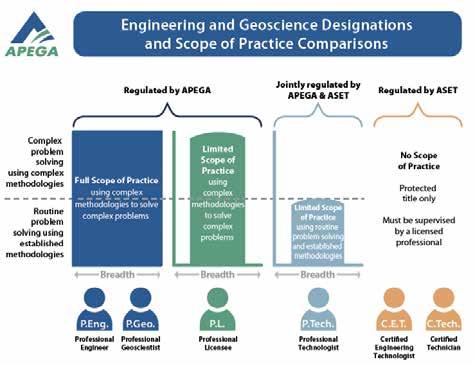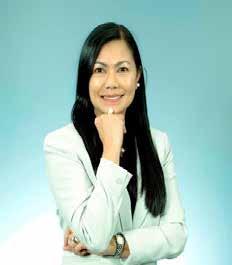
2 minute read
How does the “Engineer” Designation in the Philippines compare to the Engineering and Geoscience Designation and Scope of Practice in Canada?
Engineer In Action
Mervin Cereno, P. Eng. mmcereno@gmail.com
Advertisement
Mervin Cereno is a Filipino immigrant in Canada. He is a Filipino-Canadian Engineer licensed to practice Engineering in Alberta and British Columbia. Based in Edmonton, he is employed by one of most sought-after Construction and Engineering Consulting firms as a Senior Structural Engineer. He is a Volunteer and Advocates to help Filipino-Canadian Engineers to pursue their Professional Engineering License in Canada.
For advice on a specific case in pursuing your application, whether in ASET or APEGA, please email me at mmcereno@gmail.com.
In the Philippines, an Engineering Profession can be obtained after Graduating from an accredited University or College that offers a Bachelor of Science Degree in Engineering which depends on the specific discipline. The Bachelor of Science in Engineering Degree can be completed in 5 years after satisfying all the academic requirements. Engineering is also a regulated Profession in the Philippines since an individual needs to pass the National Exam (Board Exam) to practice his/her Profession.
A graduate of Engineering Degree in the Philippines can work and practice their profession in their field under limited circumstances that she/he cannot sign a plan or design without proper authority from the Professional Regulation Commission (PRC). Experience in the field of Engineering in most Engineering Disciplines in the Philippines is not a requirement for you to practice the Profession. In Canada, a minimum of 48 months of Experience is required before you Practice your Profession as an Engineer.

An Engineering Degree in the Philippines is recognized in most Middle East countries. In the US, Canada, Australia, and New Zealand, specific academic requirements are needed to satisfy before a Practice of Engineering is granted.
For most International Educated Engineers (IEE) who are immigrants to Canada – their path to their professional practice must be clear on which regulating body they are covered. In Alberta, APEGA published a Fact Sheet for clarity for those “International Engineers” on what and how their profession is designated and what is the scope of practice for each designation.
Below is a diagram that explains in simple terms how they will be practicing their profession in Canada where they call themselves “Engineers” in their home country.
Take note that there is a very clear definition between an “Engineer” and a “Technologist” in Canada.
In the Philippines, both of them are the same and call themselves “Engineers”. Engineers are those who solve a complex problem using complex methodologies while technologists are those who worked on routine problem solving using established methodologies. Graduates of any Engineering
Degree in the Philippines can apply and be any of those in the diagram above. Their designation and scope of practice will depend on their academic evaluation and quality of experience they gained in the practice of their Profession. Their experience need not be in Canada as long as they can prove and explain the quality and nature of their experience.
In Alberta, there are two regulating bodies – APEGA and ASET. In my past articles, I discussed the difference between these two Regulating Bodies. Internationally Educated Engineers can apply to any of these Certification bodies which they feel their academic and work experiences are suited. For more information on specific requirements, you can go to their respective websites or browse my past articles for guidance.







